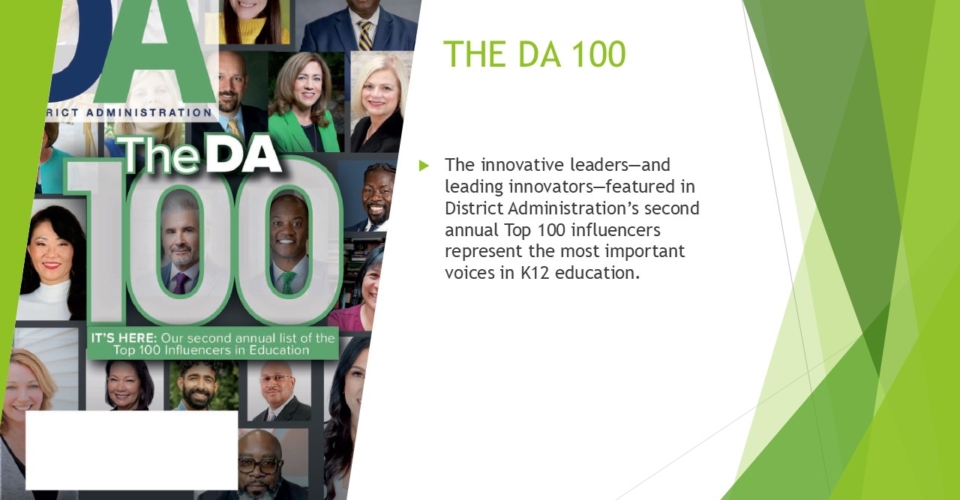When Ben Shuldiner took the helm at Michigan’s Lansing School District in 2021, the graduation rate was 62.1%. In just three years, that number skyrocketed to 86.91%, a nearly 25% improvement. Here’s the good news: His strategy is seamlessly replicable.
“I’ll never forget, my first week on the job I asked about our graduation rate,” says Shuldiner. “They told me, ‘So many of these kids are gone and we don’t know where they are.’”
However, he knew the district could do better. In fact, the district incorporated a new position specifically designed to reach these “lost” students: the graduation specialist.
Reaching students through intentionality
Similarly, the district’s dropout rate has shrunk to single digits for the first time, measured at 6.62% for the 2023-24 school year—compared to 17.35% when Shuldiner arrived at Lansing.
“That is astronomic. It is unheard of, and we’ve done that because we have focused diligently on supporting our students where they are, supporting our faculty to help our children, and creating new systems and structures that are devoted to making sure that our children graduate,” Shuldiner explains.
One of those strategies includes graduation specialists whose sole focus is supporting individual children and seeing that they graduate. That includes making home visits, sitting down with families and even stopping by a student’s place of work to check in on them.
“We’ll find kids that are working and we’ll go right to their place of business,” he says. “We’ll go to the McDonald’s or Walmart or CVS, wherever they’re working and say, ‘Look, you haven’t finished. What can we do to figure it out?’ We’ve even talked to their bosses. It’s been amazing. Everybody wants their children to succeed.”
Such intentionality makes these intervention efforts possible, even in a district like Lansing with more than 10,000 students across 25 schools. Shuldiner says every school employee has a connection to a child, and if everyone is on the same page, “you can move mountains.”
Giving students a second chance
Lansing’s graduation specialists came across several students who were off by one credit or didn’t take a class due to a scheduling error. The specialists went through the system to schedule those students appropriately.
Additionally, the district implemented robust credit recovery for students who may have failed one or two classes. Students can spend a weekend catching up on a single class at a 200-acre, off-site environmental education center.
“A child would go up on a Friday, they’d work throughout the weekend and learn what they needed, they’d re-engage and make up all of this work,” Shuldiner explains. “You’re talking about 16 hours, 20 hours of work they’re making up. Then, they take either a test to show that they’ve learned it or some sort of performance-based assessment.”
More from DA: Why this superintendent aims to ‘push the genius in every child’
And if that’s not enough, students can participate on Saturday, spring and winter break schooling or attend an alternate education program at the Lansing Learning Hub. There, students can do online work and receive wraparound services from social workers, school counselors and therapists.
“What we’ve seen is kids that had disengaged from the school district, those who didn’t want to be in brick and mortar or large high schools, loved the fact that they could go to the Lansing Learning Hub where they could work online, but in a physical building with counselors, with support, with people holding them accountable,” he says.
Keeping leaders involved
Principals play a key role in re-engaging students and boosting graduation rates, says Schuldiner. Every month, he and his graduation specialists meet with high school principals to assess how student performance.
“We put students on the computer screen and go through every single one of the children who we want to see graduate,” he says. “We ask [principals], ‘How are they doing? What are they doing? What programs are they involved in?’ Because then every principal and their team take ownership of every child that is supposed to graduate.”
Then, once a month, all school-based graduation specialists meet with Shuldiner and district-level graduation specialists to present their “up-to-the-minute” numbers on who’s on track to graduate and what support they need.
“It’s been incredible,” he says. “Every month now, all the schools come with their people. It’s not just from our three big high schools but the alternative ed program, as well as our online school. Each one of them is going to be held accountable.”
“I think what we have done is replicable,” he adds. “I think what we have done can be done throughout the country.”
Shuldiner encourages other leaders who are working to improve graduation rates to not be overwhelmed by the numbers. Instead, start small, get a sense of the problem and ensure your data is correct so you can reach the right children.
From there, make sure everybody “and I mean everybody,” believes that the kids can succeed, he adds. “Because when you do that, then you’re looking at this problem in a positive and not a deficit-thinking model,” he says.



